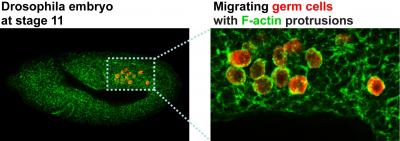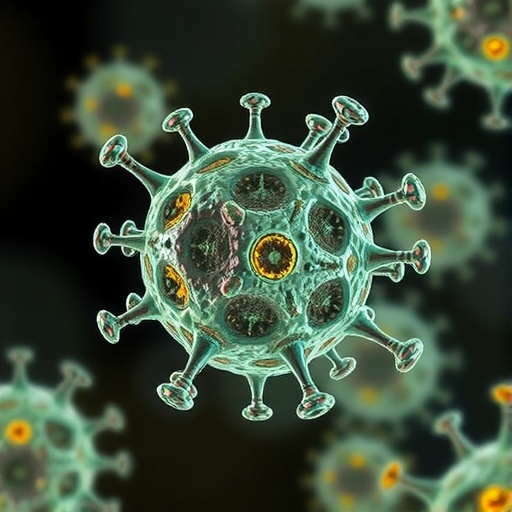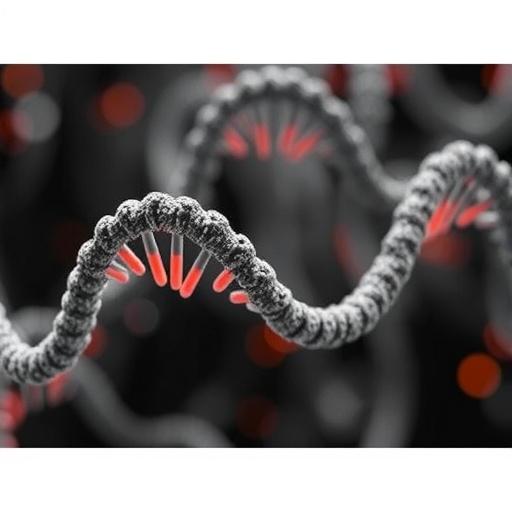Findings from Johns Hopkins Medicine study have potential implications for understanding cancer cell spread

Credit: Deborah Andrew and JiHoon Kim, Johns Hopkins Medicine.
Working with fruit flies, scientists at Johns Hopkins Medicine say they have identified a new molecular pathway that helps steer moving cells in specific directions. The set of interconnected proteins and enzymes in the pathway act as steering and rudder components that drive cells toward an “intended” rather than random destination, they say.
In a report on the work, published March 2 in Cell Reports, these same molecular pathways, say the scientists, may drive cancer cells to metastasize or travel to distant areas of the body and may also be important for understanding how cells assemble and migrate in an embryo to form organs and other structures.
The team of scientists was led by Deborah Andrew, Ph.D., professor of cell biology and associate director for faculty development for the Institute for Basic Biomedical Sciences at the Johns Hopkins University School of Medicine.
Andrew and her colleagues began this research while studying a gene called Tre1 and its role in the development of salivary glands in fruit flies. The tools to study the effects of turning the gene on and off weren’t ideal, she says. So, two of the team members, Caitlin Hanlon, Ph.D., of Quinnipiac University and JiHoon Kim, Ph.D., of Johns Hopkins, generated fruit flies that lack the protein-coding portion of the Tre1 gene. The pair also put a fluorescent tag on the Tre1 protein to learn where it localized during key steps in development.
In experiments with fruit fly embryos carrying an intact Tre1 gene, cells that produce future generations of the organism, called germ cells, migrate correctly to the sex organ, known as the gonad.
“Without the Tre1 gene, however, most of the germ cells failed to meet up with other nongerm cells, or somatic cells, of the gonad,” says Andrew. “Correct navigation of germ cells is important to ensure that future generations of the organism will happen.”
This is not the first time that scientists noted Tre1’s importance in germ cell navigation. Two research teams from Indiana University and the Massachusetts Institute of Technology had previously made the link. However, says Andrew, questions remained about what happens inside germ cells to get cells to the right place once Tre1 activates.
It was already known that the Tre1 gene encodes a protein that spans the cell membrane multiple times and pokes out onto the cell’s surface. It’s a member of a large family of proteins called G protein-coupled receptors, which enable cells to communicate and respond to signals from other cells and light and odor cues. Nearly 35% of FDA approved medicines target G protein-coupled receptors, says Andrew.
To more precisely track the molecular events downstream of Tre1, Kim, a research associate and postdoctoral fellow at the Johns Hopkins University School of Medicine, used tissue cultures of fruit fly cells to find the location of fluorescently tagged molecules that are potentially triggered by the activated Tre1 protein. In the tissue cultures and germ cells of living flies, Kim uncovered the downstream genetic pathway.
He found that Tre1 functions as the cell’s helmsman, controlling steering of the cell. Tre1 activates the cell’s steering and rudder components by spurring on a cascade of proteins and enzymes, including a phospho-inositol kinase, PI(4,5)P2, dPIP5K, dWIP and WASp.
At the end of the molecular cascade, a chain of actin proteins forms in a protrusion at the cell’s leading edge to exert mechanical forces for movement.
The scientists also searched for the upstream signal that activates Tre1. They used a genetically engineered protein made by researchers at the University of California, San Francisco to track the location of a signaling protein called Hedgehog, which has previously been linked to germ cell migration, although its role in this process has been disputed.
In germ cells, Hedgehog signaling increases the membrane levels of a protein called Smoothened, which is found in the cells’ leading edge protrusion where Tre1 is also found.
The scientists plan to continue studying the pathways surrounding Tre1 and connections between the proteins and enzymes involved in the pathway.
“A deeper understanding of how moving cells navigate and spread has the potential to provide more targets for interrupting the spread of cancer cells,” says Andrew.
###
Funding for the research was provided by the National Institutes of Health (RO1DE013899, R35GM118177 and F31DE022233).
In addition to Andrew, Hanlon and Kim, other scientists who contributed to the research include Sunaina Vohra and Peter Devreotes of Johns Hopkins.
Media Contact
Vanessa Wasta
[email protected]
Original Source
https:/
Related Journal Article
http://dx.




